So you have narrowed down the applicant list of Java full-stack developers for your company. And you do want the best one there is out of that pool, don't you? The best way to go about it is to know the Java full-stack developer interview questions to ask your applicant in the interview.
Interview questions can make or break the game. A good hire is a result of rigorous, intelligent, and technical questions. If you want fruitful results for your company, you have to be prepared with an insightful interview questionnaire.
Our guide targets the best Java full-stack developer interview questions so that you can hit a rare find of exceptional programmers. By the end of this article, you'll be familiar with different methods for finding exceptional programmers and questions that should be prioritized in order to help you save time and benefit your company.
Let's start by discussing where to look for qualified full-stack Java developers. After all, you can’t find the right talent in the wrong places.
4 Places To Find Full-Stack Java Developers
Although numerous job posting platforms exist, not all of them can get you the best full-stack Java applicants. So here are the perfect places to look for the best Java stack developers:
1. Professional Outsourcing Development Companies
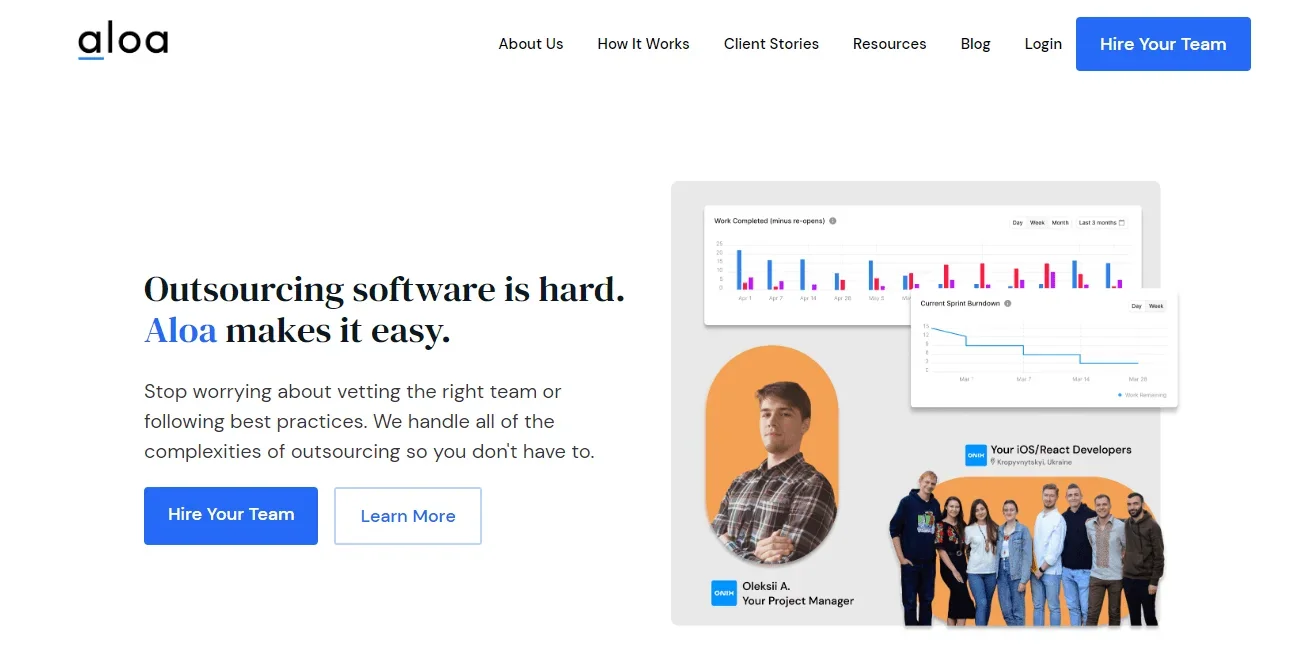
The most authentic and time-saving way of finding the best developer for your business is by approaching professional web development sites like Aloa. Aloa simplifies the recruitment process and saves you from falling deep into the hiring turmoils. And since the traditional hiring process can be lengthy and expensive, you can quickly hire full-time and part-time experts or outsource the entire project to us for 100% successful outcomes.
2. Full-Stack Communities
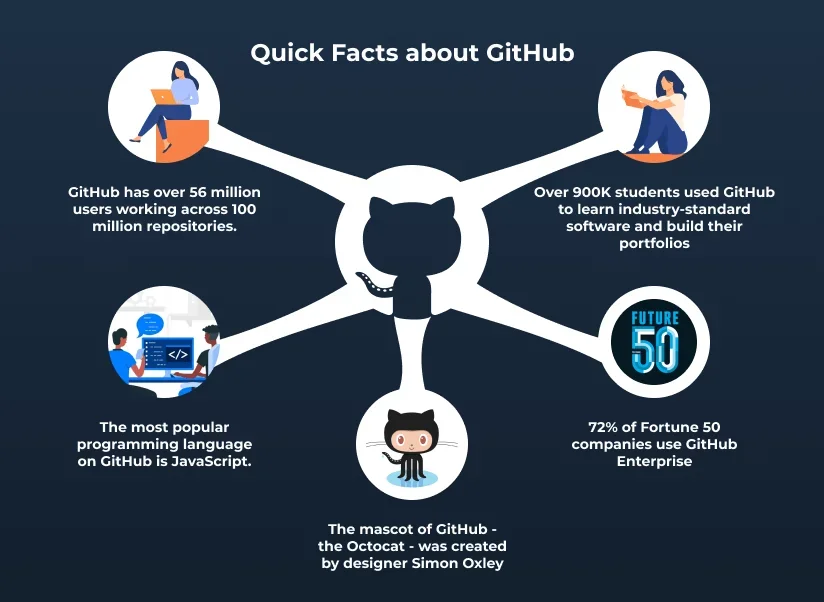
You can find highly-skilled and talented developers on full-stack online communities and forums. Going through their portfolios will help during the interview process and identify the programmers apt at pair programming and inversion of control.
The major benefit of posting jobs on such communities is that even though fewer applications will be submitted, the dev prospects who do apply will be more qualified. So try to post jobs on the following platforms:
- GitHub
- CodeProject
- Stack Overflow
3. Job Posting Sites
There were times when companies used to publish jobs in the newspaper's classified section. Now, there are many high-traffic job listing websites with many potential candidates. You can try posting the job on sites like Glassdoor and Indeed to get the best responses.
The simplest approach to connect with a large pool of software developers is still through these job listing websites. These websites can help you in locating qualified applicants when you're trying to figure out how to employ a full-stack Java developer.
4. LinkedIn
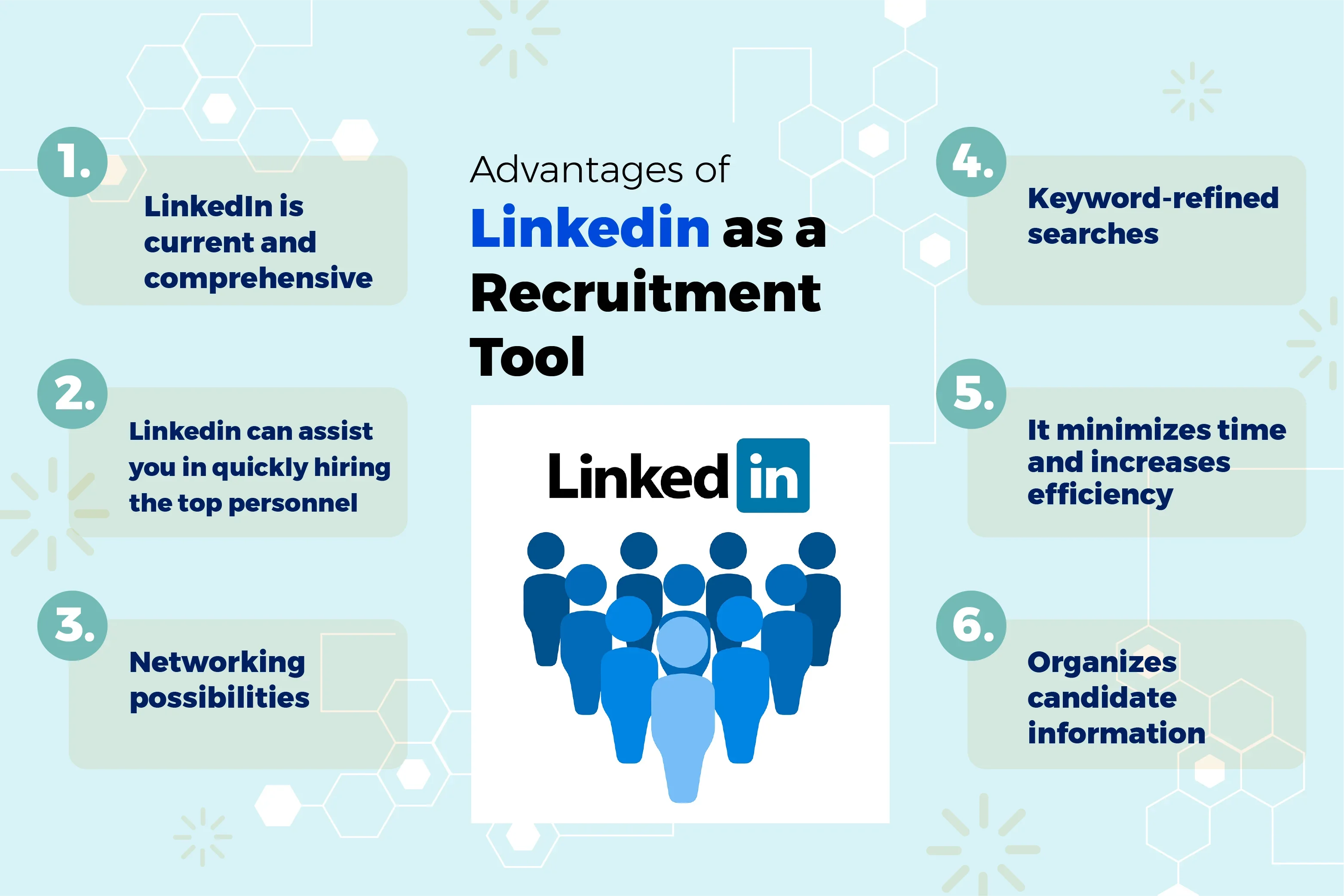
LinkedIn is the go-to place if you are looking to hire for full-stack web developer jobs. By providing a variety of methods to reach out to and filter the right applicants, this social media job networking platform accelerates the candidate search process.
You just need to share the job posting with the correct details and job responsibilities. Finding the perfect candidate becomes even easier when you use the right job-specific keywords.
21+ Best Java Full-Stack Developer Interview Questions To Ask
We have compiled 22 interview questions and answers after extensive research to improve the hiring process. By using these carefully selected questions, you'll be able to thoroughly assess each candidate's skills and choose the best one for your project.
Q1. What Are The Current Trends In Java Full-Stack Web Development?
This question will help you figure out if the applicant is interested in learning new things to support their full-stack development skills. A candidate who is passionate about full-stack development will know the latest happenings in the industry.
For example, Oracle Java 7 has been replaced by Java 8 LTS in March 2023. Likewise, the latest version of this programming language is planned to be launched in September 2023. Being familiar with this news and trends will help you identify the candidates that are keeping themselves updated with the latest developments.
Q2. How Do You Run Java Programs On The Command Line While Setting The Classpath With Multiple Jars?
Basically with this question, you are trying to inquire if the person can run Java applications outside the Integrated Development Environment (IDE) or not. But in a tricky way…
An experienced Java full-stack developer should understand this question and propose a solution. Although the process requires a practical demonstration, you can judge their knowledge through their answers. And if they tell you they need an editor (TextPad or Notepad), Javac, and Java, it means they know how to do it.
Q3. How Does Garbage Collection Stop Java Program From Showing OutOfMemoryError?
Here’s another tricky question. Garbage collection automatically removes unused memory from Java applications. But it only eliminates information from the heap memory that is no longer required.
And once the heap memory is full, the application begins to show the OutOfMemoryError that is fixable only through a Java Virtual Machine (JVM). The candidate should use JVM to increase the heap space to fix the error. Otherwise, they won’t be able to add a new object in Java.
Q4. How Final, Finalize, And Finally Different In Java?
“Final” is a keyword to access the Java modifier. “Finalize” is a method that supports the post-cleanup process while “Finally” is a block to execute essential code. A good Java full-stack developer must know the differences between these terms, as their correct use is necessary for exception handling.
Remember, exception handling is a mechanism for controlling runtime errors. So use this question to judge the applicant’s capabilities to overcome errors like IOException and RemoteException. This query will also ensure that the person can maintain a smooth application flow under unexpected events.
Q5. What Should A Java Full-Stack Developer Know?
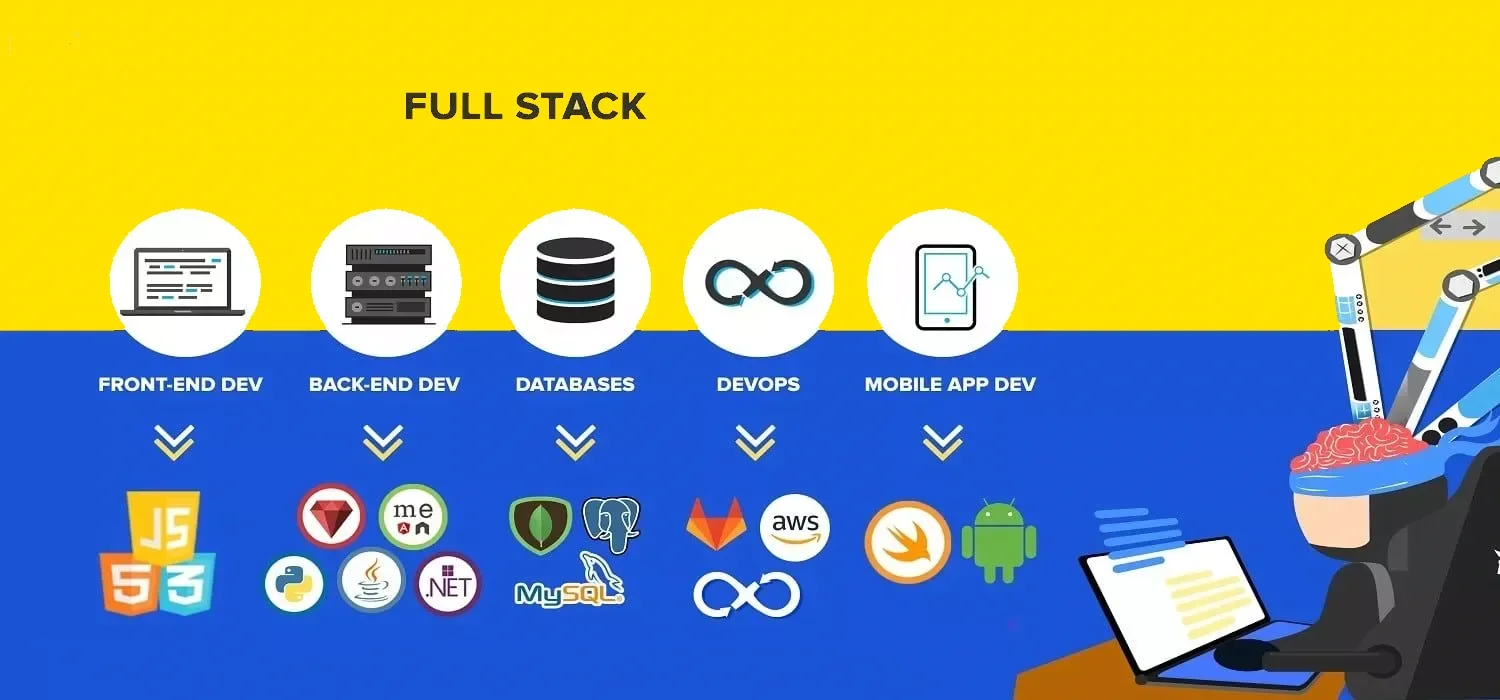
Talk to them about the important programming languages you think are mandatory for this job. Discuss what they think are necessary front-end and back-end technologies and third-party libraries, such as ReactJS, Angular, Node.js, SQL, Django, and JQuery. Their answers should also include languages like Ruby and Python.
They must also agree to some of the most required frameworks like PHP and the need to use databases, including MySQL and MongoDB. Similarly, they should be apt at Cross-Origin Resource Sharing (CORS) to permit JavaScript on a web page to initialize and send AJAX requests to different domains.
This question is one of the best ways to understand what the applicant knows about this role. And remember that they will only mention those skills and attributes they already know.
Q6. What Would Be Your Initial Strategy To Enhance A Website’s Efficiency And Scalability?
This is an everyday task for a full-stack web developer. While there are many ways to optimize a website, you should give the candidate a higher score if they provide the following techniques:
- Using a CDN
- Decreasing DNS lookup
- Deferring JavaScript parsing
- Keeping the user-interface clean
- Avoid stuffing unnecessary images
- Storing the website’s static files in visitor’s browsers
Q7. What Do You Know About Object-Oriented Programming And Functional Programming?
The functional programming approach allows programmers to develop and initialize small and independent functions (collection of data and commands) through constructors. And by combining and reusing these functions, they can make complex logic.
Contrarily, object-oriented programming (OOP) is an essential part of software development. This approach allows developers to manipulate objects (collection of data and functions) without involving logic.
A Java full-stack engineer should know the differences between object-oriented programming and functional programming. And the right candidate must possess the ability to develop projects through both methods to build a solid iOS or Android application.
Q8. How Can You Benefit With Referential Transparency?
Referential transparency is a part of functional programming. It allows full-stack Java developers to replace an application’s function without changing the present result. Moreover, this method enables developers to find reasoning for a particular program and simplifies the refactoring and unit testing process.
This question lets you find out the candidate’s experience with Java language. An applicant with this knowledge can rectify errors without disturbing the whole program.
Q9. What Does RESTful API Means?

REST is an architectural style that is used to build web services. It consists of HTTP requests which give access to data types and allows users to use them. On the other hand, Application Program Interface (API) allows two or more web applications to communicate. And when these two processes are combined, the term is called RESTful API.
Given that it is essential to understand how to use RESTful API to read, create, delete, and update data, the right response to this question will set apart the best full-stack developers from the competition. Moreover, it allows the developer to code requesting services from applications or operating systems.
Q10. What Is The Meaning Of Promise In Java full-stack Development?
This is a basic question but answering it right is of high importance. A promise is referred to as a JavaScript object returned from asynchronous functions that confirm the actual state of the operation. This object also helps in effective error handling compared to callbacks and events.
The developer should also discuss its three states:
- Fulfilled
- Pending
- Rejected
The interviewee should not hesitate to deliver the above information. If they fail to explain, it means they lack the qualities to steer asynchronous operations and fix errors in the simplest manner.
Q11. As A Java Full-Stack Developer, What Measures Will You Take To Reduce The Load Time Of An Application?
There are many ways to reduce the application’s load time. However, there are some standard strategies every good full-stack Java developer would choose. For instance:
- Ignore URL redirects
- Compress the content
- Decrease HTTP requests
- Leveraging browser caching
- Put script reference at the bottom
- Optimizing image format and size
- Use stylesheet reference at the top
- Place CSS and JavaScript externally
Make sure the applicant is familiar with the above techniques to reduce load time.
Q12. How Can You Benefit Our Business Through Continuous Integration And Continuous Development?
Continuous integration is a coding deployment practice that allows developers to connect daily coding in a shared repository multiple times daily. Continuous delivery permits automatically delivering web applications to the chosen infrastructure.
A proficient Java full-stack developer should explain the concept of continuous integration and continuous development (CI/CD) and how they can use this approach to increase your business.
Candidates who know how to use CI/CD correctly can make effective software and programs and get them to the market faster. They can also use this philosophy for debugging and adding new features to the app.
Q13. What Architectural Design Patterns Have You Used To Design Applications?
The architectural design patterns use the design structures of different elements and systems of the software to make them reusable. It saves time and allows full-stack developers to code faster as they can use the same approach multiple times to encounter similar problems.
The candidate should be able to use the following architectural design patterns to design software and web-based programs.
- Layered Pattern
- Event-Driven Pattern
- Master-Slave Pattern
- Model View Presenter
- Monolithic Architecture
- Model View Controller (MVC)
Q14. How Can You Make A Stable Server Connection Without Server-Side Events Protocols?
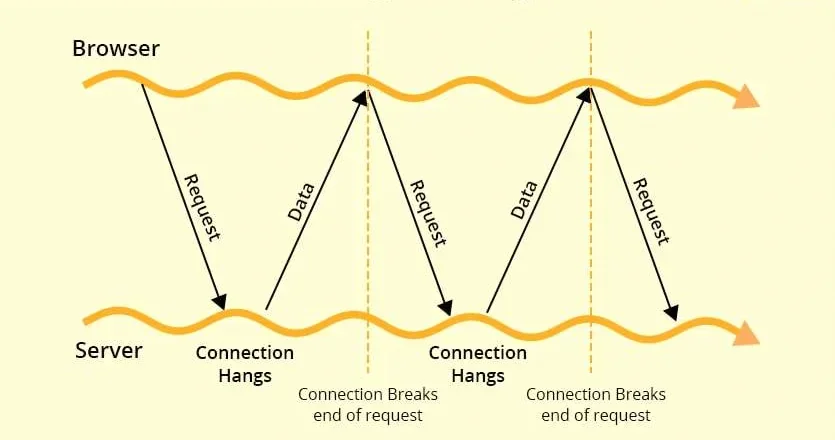
This interesting question will help you understand the applicant’s know-how about long polling. They need to apply the long polling method to develop a stable server connection without the interference of server-side protocols or WebSocket.
With the help of long polling, the developer can establish queries and clean the incorrect codes to make a powerful application.
Q15. How Does Semantic HTML Help In The Development Of Applications?
Semantic HTML is a collection of tags that give meaning to the web page and its elements. Every Java full-stack developer should be aware of these tags, such as <p>, <h1>, and <cite>, because of the following reasons:
- Aids in search engine optimization
- Allows developers to style the page content
- Help browsers understand the meaning of the codes
- Providing additional information and supporting communication
Although asking about semantic HTML or HTML5 appears to be a common question, it will give you an idea about the applicant’s apprehension over the topic.
Q16. How Can You Automatically Assign Null And Undefined In JavaScript?
The term null defines a null value whereas undefined describes a declared but unassigned variable. The main reason for asking this question is to analyze a candidate’s knowledge of full-stack Java programming.
Since JavaScript never automatically assigns the values to undefined or null, therefore, an able and experienced interviewee should clarify this concept promptly when you inquire about this subject.
Q17. What Are The Major Differences Between REST And GraphQL?
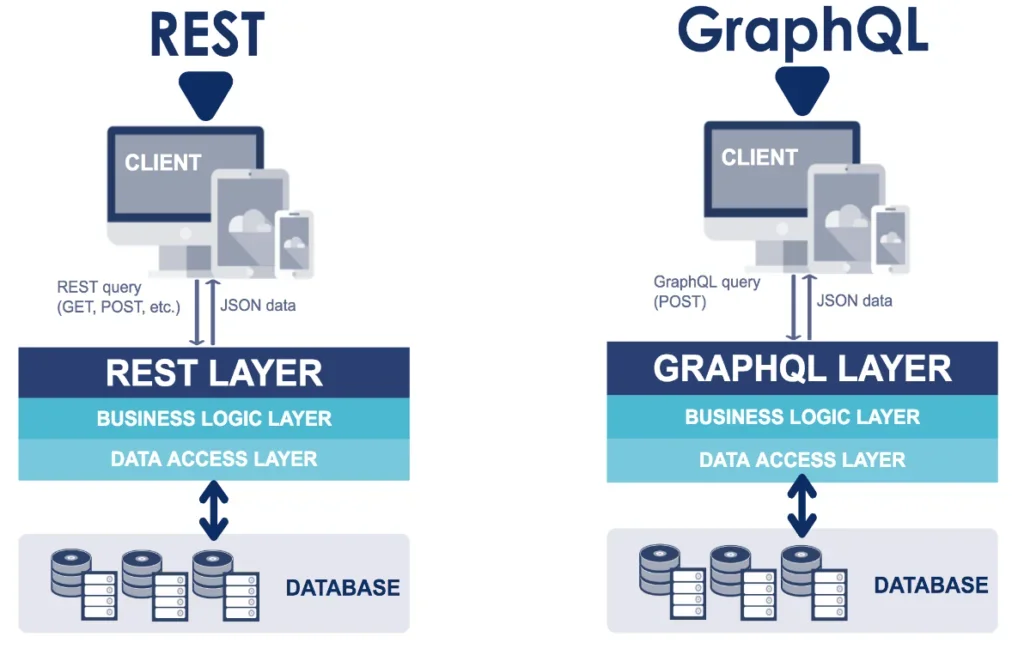
GraphQL is a server-side runtime and query language for API while REST is a powerful API architecture and methodology to enable the program to manage and interact with cloud services. The former includes a single endpoint and the latter has multiple endpoints.
By asking this question, you can confirm that the candidate is capable of working through both because GraphQL allows developers to add features to the application required by the clients, and REST gives improved and flexible modular architecture to the apps.
Q18. What Do You Mean By Connection Leak In Java And How Can You Fix It?
A connection leak occurs when the programmer unintentionally forgets to close Java Database Connectivity (JBDC). The most common connection leak known in Java-based development is the connection pool.
The easiest way to fix a connection leak is by rectifying the code. The developer must possess abilities to optimize the database through normalization and denormalization and check all the database transactions/requests and close them permanently to resolve this issue.
Q19. What Methods Do You Prefer For Session Management In Servlet?
Servlet is a Java class that enhances servers’ capabilities to host applications. The session is a state that consists of various responses and requests between the client-side and the server-side.
Since web servers and HTTP are both stateless, a developer can only manage a Servlet session by passing a unique session id between the server and client through the following methods:
- Cookies
- User Authentication
- HTML Hidden Field
- Session Management API
Q20. What Do You Mean By RequestDispatcher?
RequestDispatcher is a popular request transfer method in development. It enables Java full-stack developers to forward requests to other resources, such as JSP and HTML in the same application.
A seasoned candidate will tell you ways to use it to include another resource’s content in the response through include() and forward() sub-methods.
Q21. What Is The Meaning Of Callback Hell In Java Full-Stack Programming And How to Fix It?
Callback hell in JavaScript is nestled callbacks lying one above the other in a pyramid structure. The developers use this phenomenon to execute various asynchronous operations. But this practice makes it hard to read and maintain code.
Ask your candidate if they can fix callback hell and pay close attention to their methods. Their prescribed ways for solutions should be easy and quick.
Q22. How To Ignore Deadlock In Java?
Deadlocks occur when multiple threads try to access a similar resource simultaneously. This multithreading wastes time and makes the process difficult. Therefore, the candidate must know about ways to avoid deadlock.
They should consider doing the following things to ensure there are no deadlocks:
- Utilize a lock-free data structure
- Assign a numeric value to the lock
- Avoid giving multiple threads to the lock
Conclusion
Not all recruitment questions can help you get complete information about a candidate’s ability and skill set. But when you know essential Java full-stack developer interview questions, you can use them to discover their development potential.
We hope that today’s guide has provided you with some insightful job interview questions to ease your recruitment process and will help you identify the right candidate that best suits your business needs.
And Aloa can help you in this journey. We remove the burden of hiring full-stack Java developers by providing a dedicated team of remote developers for your projects. Our resources are selected after a strict screening process and are constantly kept updated on the latest technologies and frameworks with periodic courses.
To get more details on how the process works, you can contact us at [email protected].

